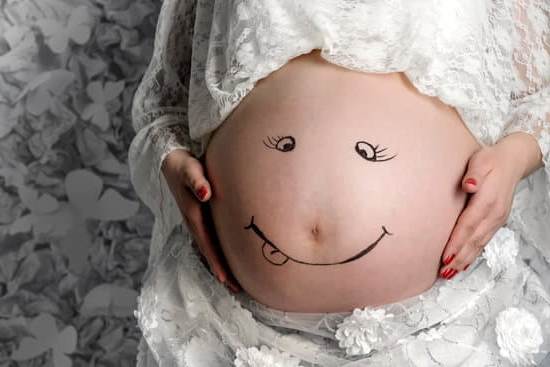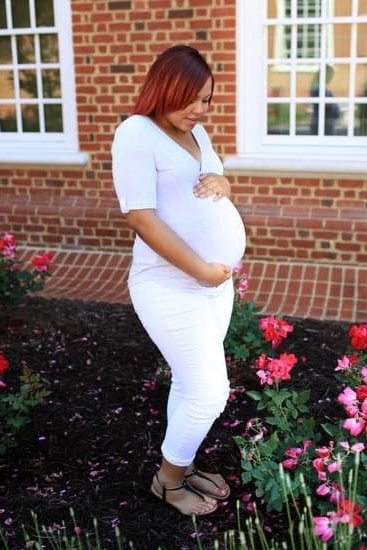How long cat pregnancy lasts is a common question among cat owners who are eagerly awaiting the arrival of adorable kittens into their home. The feline reproductive process is a fascinating journey filled with different stages and signs that indicate the onset of pregnancy in cats. Understanding the basics of cat pregnancy, from the estrous cycle to labor and delivery, is essential for providing proper care and ensuring a healthy outcome for both mom and kittens.
Unlike humans, cats have a relatively short gestation period, typically lasting an average of 63 to 65 days. However, this can vary depending on various factors such as breed, age, and health conditions of the cat. Being aware of the duration of cat pregnancy is crucial for preparing for the upcoming arrival and being ready to provide the necessary support during this exciting time.
Throughout the course of cat pregnancy, there are key signs and symptoms that can help you determine if your feline friend is expecting. From changes in behavior to physical cues like weight gain and nipple development, being able to identify these indicators will allow you to plan accordingly for the impending birth. Stay tuned as we delve deeper into the intricacies of cat pregnancy, exploring everything from conception to postpartum care for mom and her newborn kittens.
Feline Reproduction Basics
The cat estrous cycle is an essential aspect of feline reproduction that every cat owner should understand. This cycle refers to the physiological changes that occur in a female cat’s reproductive system, signaling her readiness to mate and conceive. Here are some key points to keep in mind about the cat estrous cycle:
- Duration: The cat estrous cycle can vary in length, typically ranging from 2 weeks to several months. Most commonly, it lasts around 15-22 days. During this period, the female cat may exhibit behaviors like vocalization, increased affection, and restlessness.
- Phases: The estrous cycle consists of four phases – proestrus, estrus, metestrus (diestrus), and anestrus. Proestrus is the initial stage where the female attracts male attention but is not yet receptive to mating. Estrus is when she becomes sexually receptive and may engage in mating behavior. Metestrus follows estrus if conception does not occur, leading eventually to anestrus where the cycle temporarily pauses.
- Induced Ovulation: Unlike many other mammals, cats are induced ovulators, meaning they ovulate only after mating occurs. This unique reproductive trait explains why female cats can become pregnant by multiple males during one heat cycle.
Understanding the cat’s estrous cycle can help pet owners prevent unwanted pregnancies or plan for intentional breeding responsibly. By recognizing the signs and stages of this natural process, you can better support your feline companion’s reproductive health and well-being throughout her life.
It is important for cat owners to monitor their pet’s behavior and physical changes closely to identify when she enters heat or experiences any irregularities in her estrous cycle. Consulting with a veterinarian can provide valuable insights into how long cat pregnancy typically lasts and what measures can be taken to ensure a healthy and successful breeding experience for both the mother cat and her offspring_Msk.
Signs of Cat Pregnancy
During the early stages of a cat’s pregnancy, it can be challenging to determine if your feline friend is indeed expecting. However, there are several signs and symptoms that may indicate that your cat is pregnant. One of the most common signs is changes in behavior, such as increased affection or mood swings. Some cats may also exhibit nesting behaviors, where they start looking for a comfortable spot to give birth.
Physical Changes
Apart from behavioral changes, pregnant cats may also show physical signs of pregnancy. One common indicator is a change in the cat’s nipples, which may become pinker and more prominent as the pregnancy progresses. Additionally, some cats may experience weight gain or have a slightly rounder abdomen due to the growing kittens inside.
Veterinary Confirmation
If you suspect that your cat might be pregnant based on these signs, it is essential to take her to the veterinarian for confirmation. A vet can perform an ultrasound or palpation to determine if your cat is indeed expecting.
This visit will also allow the vet to provide crucial information on how long cat pregnancy typically lasts and what you can expect during this exciting time. Remember that regular check-ups with your veterinarian throughout the pregnancy are essential for monitoring the health of both mom and kittens.
The Stages of Cat Pregnancy
During the stages of cat pregnancy, it is important to understand the timeline of events that occur from conception to labor. The gestation period for a cat typically lasts around 63 to 65 days, with some variation depending on individual differences and breed. Being aware of the different stages can help you monitor your pregnant cat’s progress and be prepared for the arrival of her kittens.
Below is an overview of the stages of cat pregnancy from conception to labor:
1. Conception: When a female cat mates with a male cat, fertilization occurs in the oviducts. The fertilized eggs then move down into the uterus, where they implant into the uterine lining. This marks the beginning of pregnancy for your cat.
2. Embryo development: Over the next few weeks, the embryos develop rapidly within the uterus. By around day 14, you may be able to feel tiny swellings in your cat’s abdomen known as “beads,” which are clusters of developing kittens.
3. Fetal growth: As the pregnancy progresses, the fetuses continue to grow and develop inside their mother’s womb. By around day 35, a veterinarian may be able to confirm the pregnancy through ultrasound or palpation.
4. Preparing for labor: In the final week or so of pregnancy, your pregnant cat may start showing signs that labor is approaching, such as restlessness, nesting behavior, and a decrease in appetite. It is essential to have a comfortable nesting area ready for your cat to give birth.
Understanding these stages of pregnancy can help you provide appropriate care and support for your pregnant cat as she prepares to deliver her kittens. Keep an eye out for any potential complications and consult with a veterinarian if needed for guidance on how to ensure a smooth and healthy delivery process for both mom and her newborns.
Preparing for the Arrival
During the gestation period, it is essential to prepare a comfortable nesting area for your pregnant cat to ensure she feels safe and secure as she nears labor. Creating a cozy space will help reduce her stress levels and provide a comfortable environment for her to birth and care for her kittens. Here are some key factors to consider when setting up a nesting area for your expectant feline:
Location
Choose a quiet and secluded location in your home where your cat can have privacy and feel safe. Avoid high-traffic areas or places with loud noises that could stress out your pregnant cat. A spare room, closet, or even a quiet corner in your bedroom can make an ideal nesting spot.
Bedding
Provide soft and warm bedding materials for your cat to create a cozy nest. Consider using blankets, towels, or pet beds that are easy to clean in case of any mess during labor. Make sure the bedding is thick enough to cushion her and her kittens comfortably.
Safe Space
Ensure the nesting area is free from any potential hazards that could harm the mother cat or her newborn kittens. Remove any small objects, cords, or chemicals that she could ingest accidentally. Keep other pets and young children away from the nesting area to avoid disturbances.
By setting up a comfortable nesting area for your pregnant cat, you can help ensure a smooth and stress-free birthing experience for both the mother and her soon-to-arrive kittens. Providing a safe and cozy space will contribute to her overall well-being during this crucial time of pregnancy. Remember to monitor her behavior closely as she prepares to give birth and be ready to provide assistance if needed during labor.
Nutrition and Care During Cat Pregnancy
During cat pregnancy, it is crucial to pay special attention to the nutritional needs of the expecting mother. A pregnant cat has increased energy requirements to support her developing kittens. As such, it is essential to provide a high-quality diet that is specifically formulated for pregnant or nursing cats. Look for cat food labeled as “complete and balanced” to ensure that it meets all the necessary nutrient requirements.
In addition to a well-balanced diet, it is also important to provide your pregnant cat with plenty of fresh water at all times. Hydration is key to maintaining overall health and supporting milk production once the kittens are born. Keep an eye on your cat’s water intake and contact your veterinarian if you notice any significant changes.
It is recommended to feed your pregnant cat multiple small meals throughout the day rather than one or two large meals. This will help prevent stomach upset and ensure that she receives a steady supply of nutrients. If you have any concerns about how much or how often to feed your pregnant cat, consult your veterinarian for personalized advice based on her individual needs.
| Nutritional Needs | Key Points |
|---|---|
| Increased energy requirements | Provide high-quality diet labeled as “complete and balanced” |
| Hydration | Offer plenty of fresh water; monitor intake |
| Meal Frequency | Feed multiple small meals per day |
Potential Complications During Cat Pregnancy
During cat pregnancy, it is important for pet owners to be aware of potential complications that may arise. One common issue that can occur is known as dystocia, which refers to difficult or obstructed labor. This can happen if the kittens are too large to pass through the birth canal or if there are abnormalities in the birthing process. Signs of dystocia include prolonged straining without the delivery of kittens, excessive bleeding, or signs of distress in the mother cat.
Another complication to watch out for during cat pregnancy is eclampsia, also known as milk fever. This condition typically occurs shortly after giving birth and is characterized by low blood calcium levels. Symptoms of eclampsia include restlessness, muscle tremors, and even seizures. If left untreated, eclampsia can be life-threatening for both the mother cat and her kittens.
In addition to these complications, other warning signs during cat pregnancy may include a decrease in appetite, lethargy, abnormal vaginal discharge, or a sudden change in behavior. It is important for pet owners to monitor their pregnant cats closely and seek veterinary care if they notice any concerning symptoms. By being proactive and attentive to these warning signs, pet owners can help ensure the health and well-being of their feline companions throughout the entire pregnancy and birthing process.
| Complication | Symptoms |
|---|---|
| Dystocia | Prolonged straining without delivery of kittens, excessive bleeding |
| Eclampsia (Milk Fever) | Restlessness, muscle tremors, seizures |
| Other Warning Signs | Decrease in appetite, lethargy, abnormal discharge, behavioral changes |
The Big Day
During the last stage of cat pregnancy, it is essential to be prepared for the impending labor and delivery. It is natural for cat owners to feel anxious during this time, but being informed about what to expect can help ease some worries. The gestation period for a pregnant cat typically lasts around 63-65 days, with variations possible depending on individual factors such as breed and health status.
As labor approaches, there are clear signs that indicate your cat is ready to give birth. Nesting behavior, restlessness, reduced appetite, and increased vocalization are common signs that labor is near. It is crucial to have a designated nesting area prepared where your cat feels safe and comfortable giving birth. This area should be quiet, warm, and easily accessible for both you and your cat during the delivery process.
When your cat goes into labor, you may notice her body preparing for birth through behaviors such as licking her genitals or seeking a secluded spot. During the birthing process itself, your feline friend may exhibit different behaviors such as restlessness, panting, vocalizing, or seeking attention.
It is important to monitor your cat closely during this time and contact a veterinarian if you notice any signs of distress or prolonged labor. With proper care and attention, most cats are able to give birth naturally and without complications.
Postpartum Care for Mom and Kittens
When it comes to taking care of a pregnant cat and her kittens, one of the most crucial aspects is postpartum care. This period immediately after labor and delivery is essential for ensuring the health and well-being of both the mother cat and her newborns. Proper postpartum care involves providing a comfortable and stress-free environment for the new family, as well as monitoring their health closely.
After giving birth, the mother cat will need a quiet and secluded area where she can nurse and care for her kittens without disturbances. This nesting area should be warm, cozy, and safe from potential hazards. Providing fresh water, nutritious food, and a clean litter box within close reach is also essential in supporting the mother’s recovery process.
Monitoring the mother cat for any signs of distress or health issues is crucial during the postpartum period. Any abnormal symptoms such as loss of appetite, lethargy, discharge, or excessive bleeding should be addressed immediately by a veterinarian.
Additionally, keeping an eye on the kittens’ weight gain, activity levels, and overall health is important in ensuring they are thriving under their mother’s care. By providing proper postpartum care for both mom and kittens, you can help them recover smoothly after delivery and set them up for a healthy start in life.
Frequently Asked Questions
How Many Months Is a Cat Pregnant?
A cat is pregnant for approximately 9 weeks, which is equivalent to 63 days. During this time, the cat undergoes significant physical and behavioral changes in preparation for giving birth to a litter of kittens.
How Can I Tell How Far Pregnant My Cat Is?
To determine how far along your cat is in her pregnancy, you can observe physical signs such as a rounder abdomen or enlarged nipples. A veterinarian can also perform an ultrasound or palpation to give you a more accurate estimation of the gestation period.
How Many Kittens Will My Cat Have First Time?
The number of kittens a cat will have during her first pregnancy varies depending on factors like breed, age, and health. On average, a first-time mother cat can have anywhere from 1 to 9 kittens in a single litter. It’s essential to provide proper care and attention during this critical time for both the mom and her babies.

Welcome to my fertility blog. This is a space where I will be sharing my experiences as I navigate through the world of fertility treatments, as well as provide information and resources about fertility and pregnancy.





